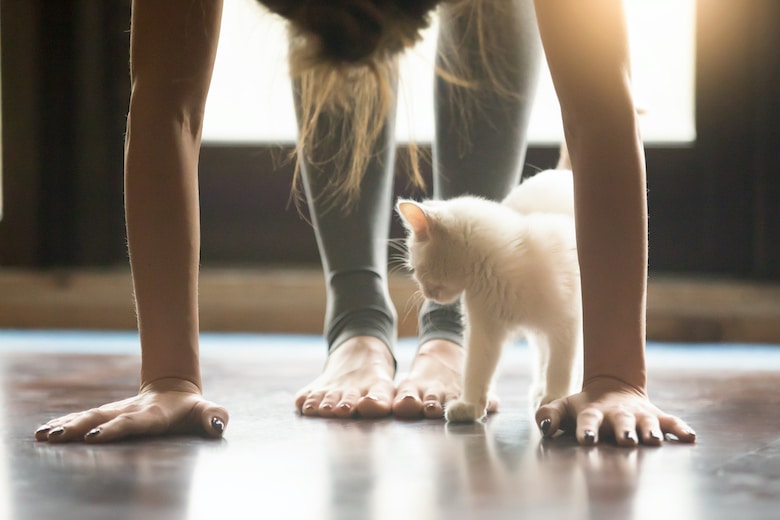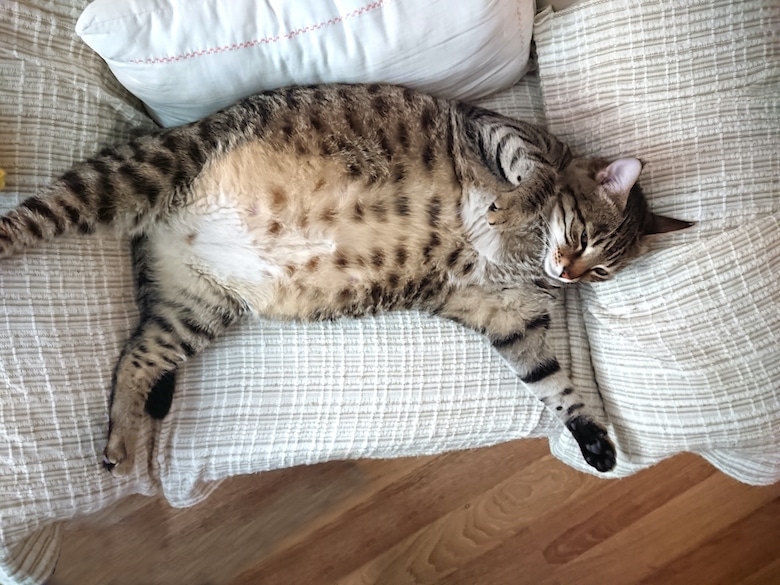Did you set a New Year’s resolution to increase the amount of exercise you’re getting? Don’t forget to include your cats in that resolution. Physical exercise is important for cats of all ages. Like with people, cats who get regular exercise are generally happier and healthier both physically and emotionally.
How much exercise do cats need?
Although there is not a prescriptive amount of exercise cats should get each day, Dr. Joy Weinstein, VMD, DACVS of the NorthStar VETS Surgery Team explains: “We do know cats benefit from exercise, environmental enrichment and daily interactive play.”
Cats can be independent, and many will entertain themselves with toys, pouncing, running and climbing in your house.
“The amount of exercise a cat needs may vary, depending on their age, health and lifestyle,” says Dr. Jamie Richardson, medical chief of staff at Small Door Veterinary. Dr. Richardson advises “some cats are more energetic than others, but most cats generally need at least two to three play sessions with you a day, if not more.”
These play sessions should be spread through the day and don’t have to be long; cats often will play in short bursts.

Photo: fizkes/Getty Images
Why is regular exercise important for cats?
“Regular exercise maintains joint range of motion and is particularly important as cats age and develop arthritis. Cats with arthritis will be stiff or lame when they get up, but this improves as they move around” advises Dr. Weinstein.
In addition, Dr. Richardson notes that supporting your cat getting regular exercise is a key component to maintaining your cat’s overall physical and mental health to support your cat remaining fit and at a healthy weight.
“Approximately 60% of cats in the United States are overweight or obese, which impacts their quality of life, making it harder for them to enjoy playtime and exploration, and it can also lead to medical issues such as diabetes, pancreatitis and arthritis” Dr. Richardson explains.
Physical health exercise can also improve behavioral issues.
“When cats don’t get enough exercise, they can turn to disruptive actions like hyperactivity at night, scratching at unwanted surfaces or play aggression” says Dr. Richardson.
Helping cats get enough exercise can also help improve relationships between cats in multi-cat homes and decrease conflict.
How to increase your cat’s exercise indoors
The best way to bring exercise into your cat’s daily life is to play with your cat.
“Different cats enjoy different play activities. Interactive play can be initiated with laser toys, balls, small toys (with or without catnip) and toys that dangle from a stick,” says Dr. Weinstein.
You want to encourage your cat to pounce, stalk, jump and chase. Cats are natural hunters, and you can channel that hunting instinct through games that will naturally increase the amount of exercise your cat is getting.
“Provide puzzle toys and interactive toys for your cat to play with on their own,” says Dr. Richardson.
You can also add exercise into your cat’s routine by providing opportunities for cats to work or hunt for their meals. You can do this with food-dispensing toys or by hiding treats around your house, on cat trees or in boxes for your cat to hunt and find.
“Changing the toys up on a daily basis keeps everyone engaged, but remember that toys should be supervised and locked in a safe place when not in use to avoid small parts like string or feathers being chewed and/or swallowed,” says Dr. Weinstein.
How do you know if your cat needs more exercise?
All cats need exercise but a sign your cats need more intentional exercise incorporated into their daily life is if “they are engaging in disruptive behaviors such as hyperactivity at night, scratching at unwanted surfaces or play aggression” says Dr. Richardson.
If your cat has been inactive for some time and/or is overweight, it’s a good idea to talk with your vet before beginning to increase the amount of exercise your cat is getting.
“If your cat only gets up to go to the litter pan or the food and water bowl, they definitely need more exercise. It is dangerous, however, to simply start exercising obese cats, because they can injure themselves running and leaping for toys” says Dr. Weinstein.
Featured Image: Yamac Beyter/Getty Images
Read Next: Why Cats And Yoga Make A Perfect Pair
